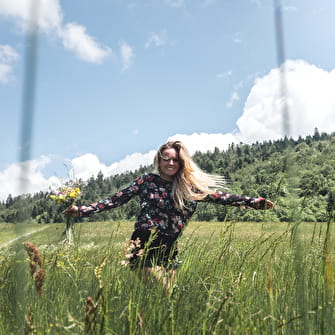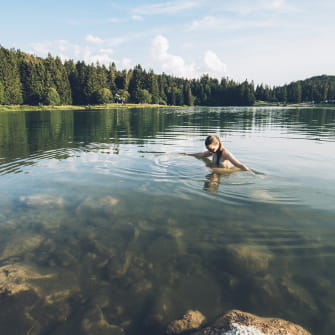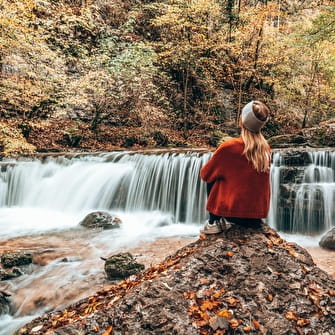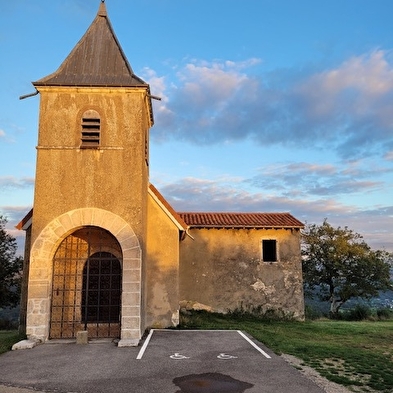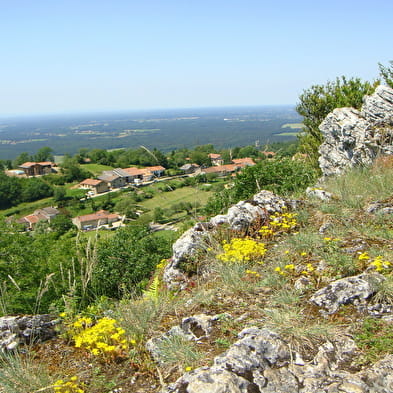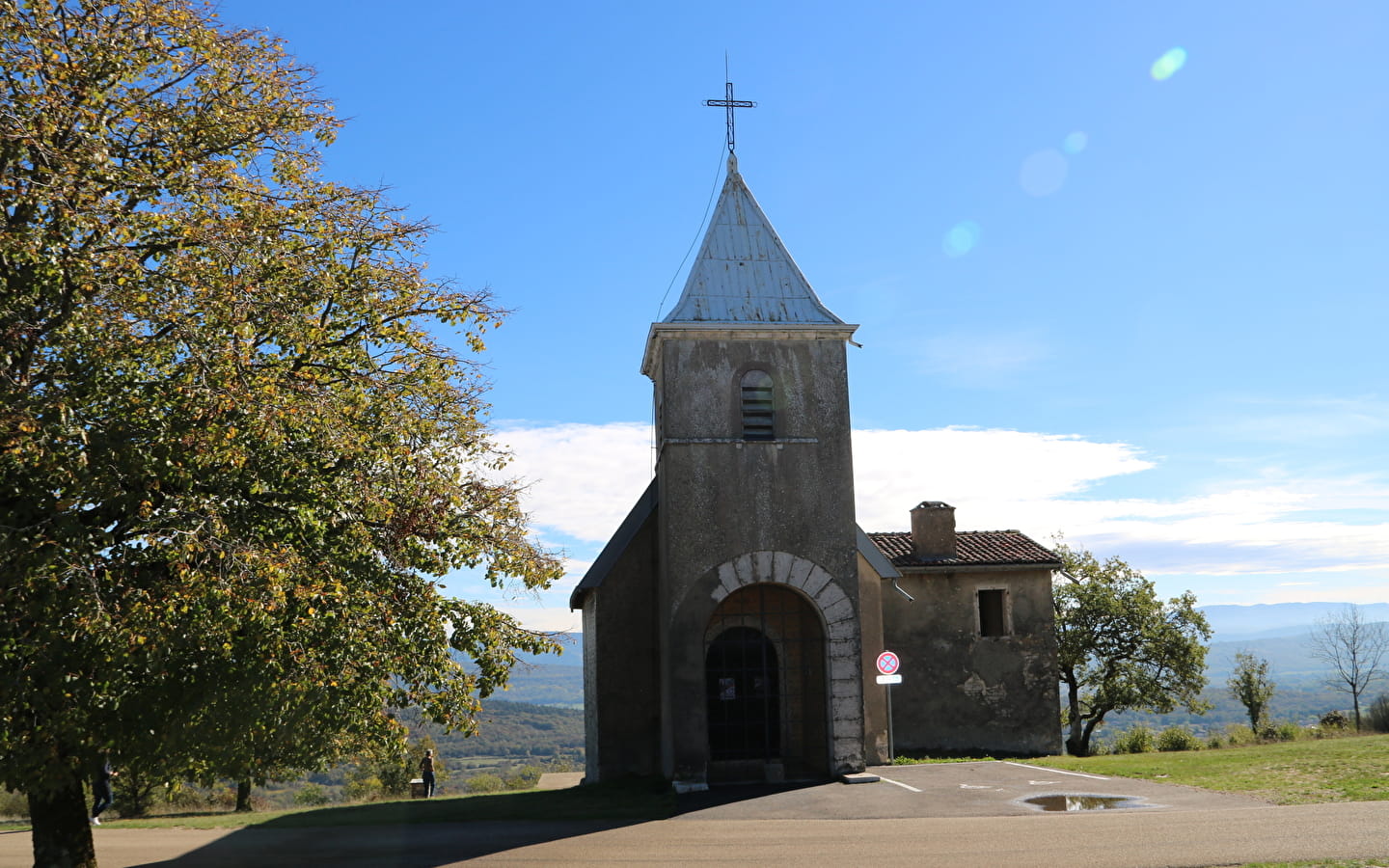
Chapelle Notre-Dame des Conches
First mentioned in the 16th century, but a sarcophagus of uncertain origin was discovered in the foundations (Musée de Brou). The present building was rebuilt in 1839. View over the Bresse region. Access by vehicle.
Interpretation panels.
Our distant ancestors, undoubtedly of the Sequane people, already inhabited this area, living by raising livestock, cultivating crops and trading with their neighbors the Eduens and the Romans on the other side of the Rhône.
Around 50 A.D., after the conquest of Gaul, the Romans were quick to notice the strategic advantages of this first link in the Jura mountains; they brought their gods with them, built temples* and probably planted vines.
*The temples of Bacchus (Dionysus in Greek mythology, god of wine and drunkenness) and Jovis (Jupiter, god of heaven and earth).
Our Celtic ancestors had developed a polytheistic religious system (admitting the existence of more than one god), under the authority of the druids. We can therefore assume that these new Roman cults came either in addition to the existing gods, or in juxtaposition, and gradually assimilated the local cults.
from the 1st century BC onwards. Celtic fanums naturally gave way to Roman, or rather Gallo-Roman, temples.
Coming directly from Asia Minor, the first evangelizer arrived in Revermont around 150 AD. Roman persecution in the 1st century forced believers to be cautious, keeping their faith out of the open to avoid attracting attention.
He is said to have dug a crypt in a cemetery (in a secluded spot quite far from Jovis et Bacchus on the eastern slope:
- the "Conche" (from the Gaulish: shell / basin with a very flat, fairly deep bottom, with raised edges and covered with wood-coppice).
St. Thyrse (a disciple of St. Polycarp, himself a disciple of St. John, the apostle to whom Christ entrusted his mother on the cross) organized meetings of the first Christians of the Revermont, to whom he inculcated the cult of Mary (the name "Notre-Dame des Conches" shows that the chapel was dedicated to the Virgin Mary).
This early Christian underground oratory seems to have been built around 180 B.C. and probably destroyed around 305 A.D. (Abbé Gringoz discovered a sarcophagus and the Virgin with grapes in the chapel's foundation walls).
foundation walls of the chapel).
The building was rebuilt further north, on the ruins of the temple to Bacchus (when Emperor Constantine established religious peace after 313). Still dedicated to Notre Dame des Conches, this chapel was the baptistery of the region (found in 1950 by Abbé Gringoz while digging a cistern) and attracted large crowds; the Virgin is depicted with a bunch of grapes. It was the Saracen invasion, around 730, that must have caused the destruction of this building. The Franks chased the Saracens out of Burgundy, and the baptistery was rebuilt as a small fortress a little to the west (where it is today, as seen from Bresse).
The monks who built it also added a building to house them: the Tassona priory (the foundations of which can still be seen today).
This time, it was the brigands of the Hundred Years' War who looted and burned it down around 1360, and it wasn't until 1402 and the Dukes of Savoy that prosperity returned. The sanctuary was rebuilt on the same site
. . and burnt down around 1536, when François 1er's troops conquered Bresse and Bugey.
In December 1794, at the height of the Revolution, the administrators of the Ramasse commune were forced to raze it to the ground. However, in 1839, another sanctuary was rebuilt on the same site by the
by the inhabitants of Ramasse and Les Combes: the one we know today.
- Pets not allowed
- Picnic area
From 01/01/2025 to 31/12/2025



